Comics archivist, catalyst, author, publisher, competition judge, COMICA cofounder and raconteur Paul Gravett should need no introduction to many downthetubes readers. His enthusiasm and energy promoting comics from around the world is second to none, unstinting since his days running the Fast Fiction service with Peter Stanbury, publishing Escape magazine, launched 40 years ago this Spring, also with Peter.
Today, he has revived COMICA, and co-runs Escape Books, and has written a swathe of books about various aspects of the comics medium and industry, including Great British Comics with Peter Stanbury, GRAPHIC NOVELS: Stories To Change Your Life, and, more recently, the brilliant Tove Jansson: The Illustrators.
An interview with Paul, then, is long overdue on downthetubes and I’m very grateful to Søren Kjellberg for kindly sharing his with us, first published on the Danish comics web board, Serieland, and presented here with some additions from Paul and Søren…

Hello Paul, and thank you for your interest in our comics forum here in Denmark. I remember you from those comic marts that I used to attend during my first sojourn in London, from 1985 – 1989. I used to stop by your stand for a chat, and also to see what was happening in fanzines and alt. comics.
Back then, you had started a slick magazine, A5 in format, called Escape, in Spring 1983 – 40 years ago. It was a good mix of editorial content and comics pages, and I have kept them all. Then you went to A4 and all was dandy, until it suddenly folded.
What happened? And is there anything you would have done differently in hindsight?
Paul Gravett: The crux really was [our publisher] Titan’s unwillingness to take Escape to the next stage, which Peter Stanbury and I had always planned for, to get national newsstand distribution. The percentage of newsstand sales of Escape was very good from its improved distribution across London and to some other cities, and the distributor saw the strong potential for it to roll out across the whole country. But this meant a bigger print-run and newstand distribution was sale or return, not like the firm sale system in comics shops. Titan didn’t want to take the risk of that next step.
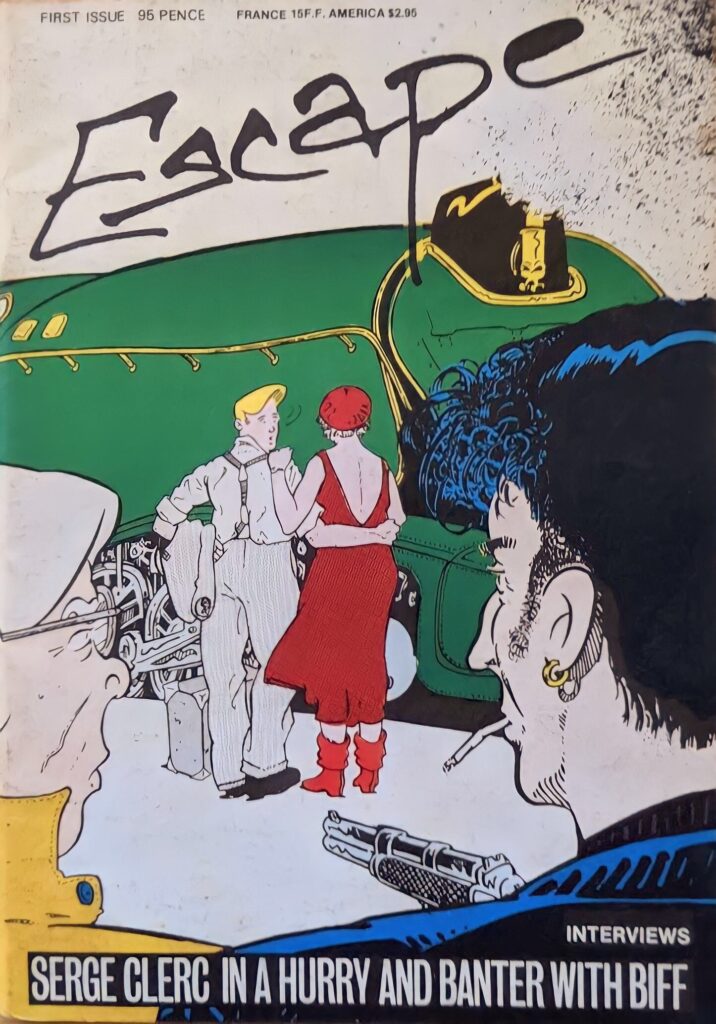
We took around an impressive dummy of our revamped, ambitious ‘Phase 3’ version of Escape, which would have had a new logo, larger pages, better paper, full colour, modelled partly on The Face, Esquire and European comics magazines. The dummy, for example, had a photo of Michael Keaton as Batman on the cover. We were looking at translating more material from Europe.
We got interest from [Editorial Director] John Sanders at Fleetway (this was before Revolver and Xpresso, I think), and from AGB Impress, who were keen because they already knew how big bande dessinée was in France, and from Express Newspapers. In the end, though, it didn’t work out.
Perhaps we could have pursued finding a loan or venture capital to develop the Escape Version 3 and make it into a bigger enterprise. In the mid- to longer-term, of course, the culture of magazines, not just comics magazines, was about to crest, and most BD magazines for adults would not survive much longer.
Even so, who knows, that dream is still a strong spark, and as people say, “Never say never…”
You are a journalist, curator, writer, and broadcaster, who has worked in comics publishing since 1981. But to me you are first and foremost a comics historian. Which of these jobs do you enjoy the most, and how did you go from being a fan to actually making comics a full-time job? The broadcaster thing is news to me. How did you get into that, and what is your medium?
Paul: I enjoy all these aspects, and they connect with and feed into each other, of course. I couldn’t see myself just choosing one of them.
Letting go of Escape was not easy for me and Peter. I was very lucky to build a different career still in comics. By 1989, I was already working for the Angoulême Festival on the curation “God Save the Comics!”, still the largest exhibition of original artwork from British comics yet staged anywhere, for the new Centre National de la Bande Dessinée et de l’Image.
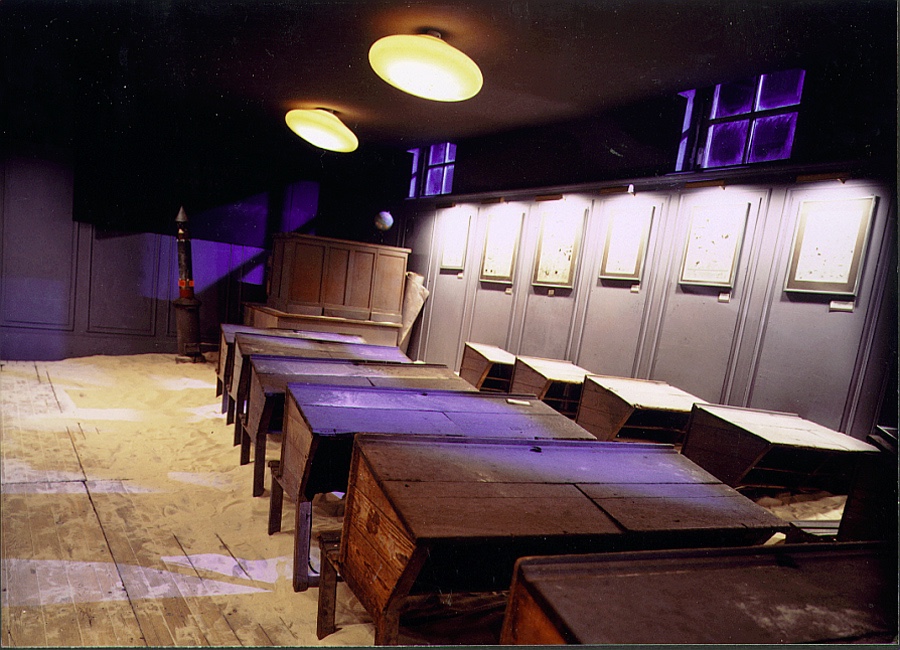
This was opened by French Culture Minister Jack Lang at the 1990 Angoulême International Comics Festival, where I was also co-ordinating the British delegation of writers and artists – that’s a whole other story! And within days after that, back in London, the exhibition I’d curated for Camden Council, “Strip Search: The New Breed of Comics”, was opened by Jonathan Ross at Swiss Cottage Library, again with lots of amazing originals, promoting graphic novels in UK libraries.
It went on to tour around the country and in 1991 The British Council brought the British part of it, and me, to represent Britain at the First Comics Biennale in Rio de Janeiro, Brazil.
As well as my contributions to various TV and radio programmes, I would have liked to do more ‘broadcasting’, and who knows, maybe develop and present a documentary movie and TV series on this endlessly fascinating and evolving medium…
The reason I moved to London was to go to film school. After graduating, I sent out unsolicited applications to every cutting room in the UK. Most of the replies were of the sort: “we’ve got you on file”. Now, we all know that “the file” is a euphemism for the bin. One rejection was particularly rude. It went something like this: “We like comics too, and subscribe to The Beano and Practical W******”. Do comics still suffer from a social stigma, or have you made progress over there?
Paul: Blimey, that is pretty negative. I think attitudes over all have become more enlightened, or at least accepting here. Many institutions have come to recognise the qualities of comics and how they can engage with and enlarge their audiences.
There remain “battles” to be won, of course. The fine art world is still uncomfortable about how to accept and accommodate this unstoppable medium within its established history, canon and values. It is improving very gradually and I hope in my lifetime we will see this change decisively. It’s one of my several ongoing goals to help make this happen.
Comics and movies are closely related, and they both have been around for, oh, about 120 years now. Until recently you could say that there was a healthy symbiosis between the two artforms, but now, with the recent glut of superhero movies, the “Hollywood” stamp doesn’t have the same critical cachet as it used to. I only like the old Christopher Reeve Superman films and the first two Batman films by Tim Burton. Are we experiencing the death of Hollywood now?
Paul: I have very little interest in movies based on comics. Even when their creators write the screenplay, or even direct. No movie can compare to the “movie” which you direct, score and star in when you read/watch/perform a comic. And while the two media have several relations, they have many more differences – and I feel many more strengths and yet-to-be-realised potentials.
I read a great quote recently from the Chip Zdarsky comic Public Domain (Image), in reply to a movie star’s glib remark that “Superhero movies are a modern mythology.” In response, a character asserts, “Superhero comics are the modern mythology. You are merely adapting them.”
I have been lobbying for Euroclassics for 18 years now, both directly and indirectly, and I am happy to say, it has paid off to some extent. Not as much as I would have liked, but by constantly talking up overlooked artists like Maurice Tillieux and William Vance, we have now got them back in print in Danish, and gaps are being filled and runs are being completed.
Could you see yourself doing a similar thing in the UK? Or do you know of anyone who is willing to take up the mantle?
Paul: People are doing that here for some classic UK comics – Rebellion of course, with their huge archive of properties, but others too, big and not-so-big, like Titan, The Book Palace, Dark & Golden, Hibernia Comics. I take a very wide purview of comics and enjoy being “The Man at the Crossroads” to help connect people and make good projects happen. So currently I’ve helped set up the first two-volume compilation of all of the stunning covers by Portuguese artist Jayme Cortez for Brazilian horror comics, bringing together major collector Skye Ott, biographer Fabio Moraes and London publisher Korero Press.
Similarly, for Christian Marra’s Passenger Press in Italy, I’ve connected Shakespeare specialist Ronan Patterson to translate Gianni De Luca’s stunning 1970s Italian comics adaptations of Hamlet, The Tempest and Romeo & Juliet into their first English edition – using all the Bard’s own original words.
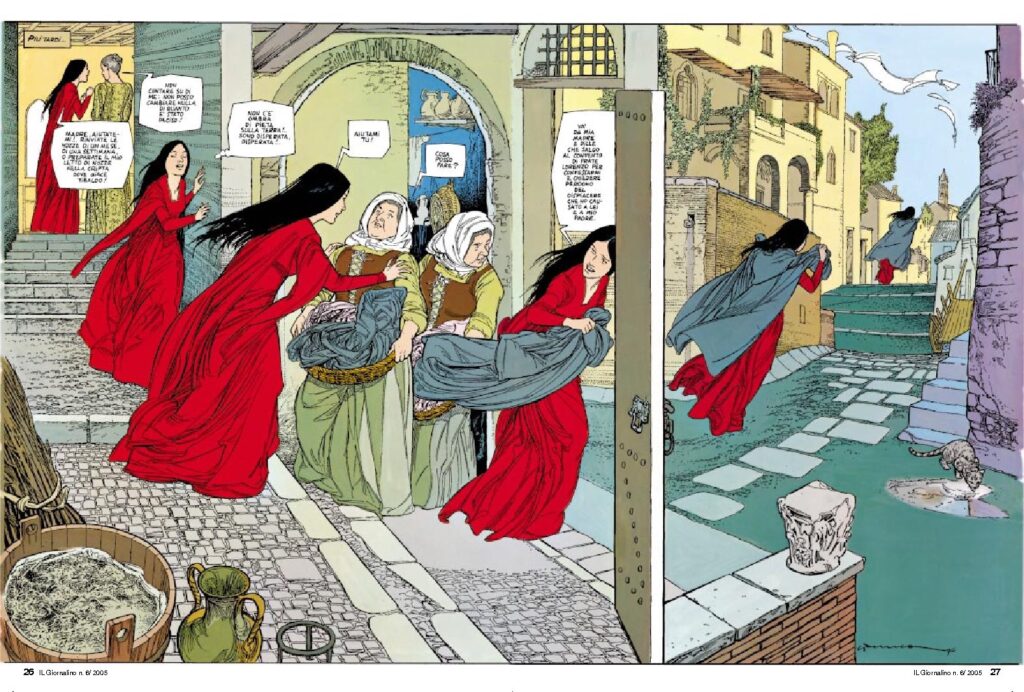
Last time we communicated was when we tried to get a complete reprint of Leo Baxendale’s classic series, “Bash Street Kids”, off the ground. Needless to say, the reply from DC Thomson was a polite, but firm “no”. Since then, you have had a Beano exhibition and a new animated TV series is underway, to tie in with the strip’s anniversary. Here’s the question: Will we ever see a reprint of Baxendale’s Beano work, in any form? And what was the lawsuit all about?
Paul: I suspect we’ll see a Bash Street Kids animated series at some stage, based of course on the current revised versions of the characters. And there’s still talk of a new comics centre/museum in Dundee? Stranger thing have happened.

Could these ignite enough interest for DCT to do this project themselves? Thomson’s change very cautiously, even now, but let’s remain hopeful. It’s hard to imagine any other publisher sitting on such a vast and splendid back catalogue and not exploiting and profiting fully from it.
Perhaps a next stage would be somehow at least to finance making the best quality scans of the whole run, even if only for the most private, confidential readership.
Leo Baxendale is not the only British comic artist whose work is missing. I’d also love to see reprints of Frank Bellamy’s Garth, Tiffany Jones by Pat Tourret and Jenny Buttterworth, Romeo Brown by Jim Holdaway, and of course, Jeff Hawke by Sydney Jordan. Titan did a bit of Garth and Jeff Hawke, and the French got Romeo Brown. As for Tiffany Jones – nada.
What can we do? Who would be interested? Time is not on our side.
Paul: There are a few encouraging signs on the newspaper strip front, such as the new Carol Day volume [collecting the much-praised newspaper strip] taken mostly from the original art and shown large-scale. It’s a very pricey volume though. I’ve got several of the Jeff Hawke Fan Club reprints of that strip, although the reproduction materials they access is not always top-notch. Paul Duncan is preparing some massive John M. Burns volumes, I gather, and hopes to help bring a Matt Marriott complete edition by Tony Weare into print.
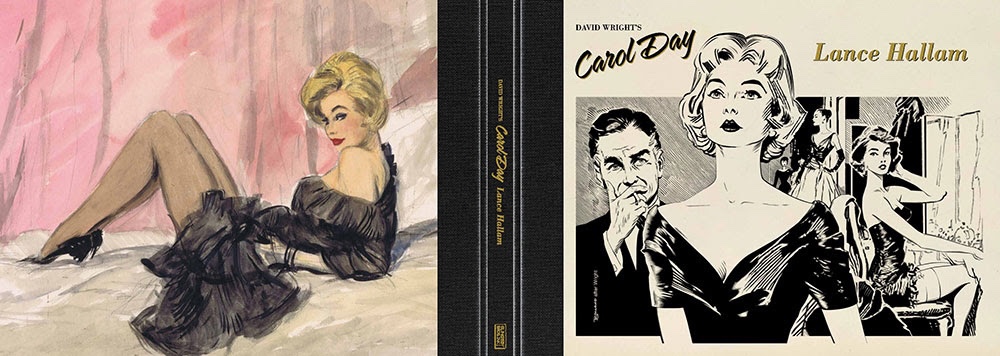
In these days of crowdfunding and a potential worldwide readership, more such quality reprint projects will hopefully get financed. “Stap me!” – I’d love to see Just Jake get a full, quality compilation at last.
You seem to have a passion for both the classics and the modern graphic novels. In fact, you are a bit of an all-rounder, whereas I am just an old fogey. How do you reconcile the two periods, classic and modern? To me, the old masters could draw, whereas the new generation can write, but don’t have the same drawing skills. Is illustration a forgotten craft?
Paul: No, there’s still plenty of remarkable illustration in comics these days, of all kinds and styles. I feel lucky to have had my vision of illustration and art blown wide open by exploring fine art while a student, visiting exhibitions, learning more about it all. That continues to this day. As a result, I bring many kinds of looking and reading to comics.
I feel very lucky to have plunged into European comics, underground comics and manga in the 1970s, and to be constantly introduced to more, old and new, from all over the world. I am also quite selective and demanding, even on creators whose work I have enjoyed. I don’t always want just more of the same.

You travel all over the world to appear at conventions and to attend and/or curate exhibitions. How many languages do you read, and why have the Euroclassics never really caught on in the English language market?
Paul: I think my jet-setting is not quite as extensive as you might believe, for example, from my Facebook posts! But yes, I’ve had huge good fortune to meet and make friends far and wide and post-lockdown it’s all kicking off again. I read English of course and French, and can manage with help reading Spanish and Italian. Google Translate is vital too. My ‘A’ level subjects in school were Latin, French and German and I loved those. And even without understanding many or any words, in comics the pictures also do a lot of the telling!
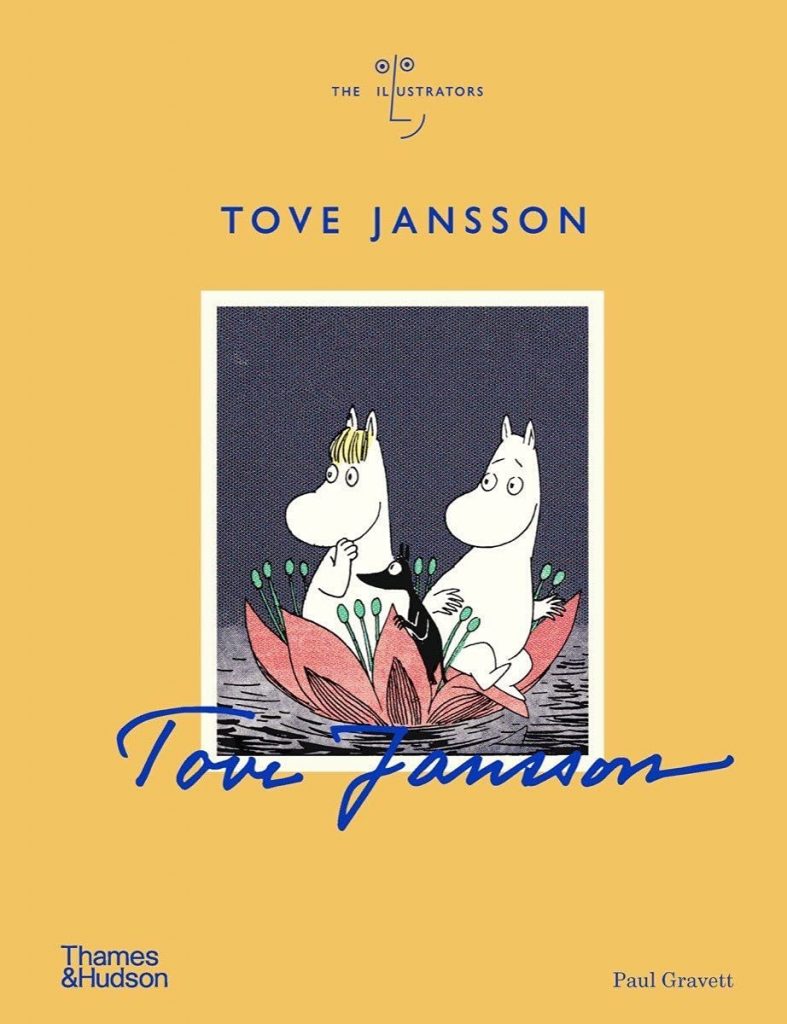
Your new Moomin book is selling well, and is being translated into other languages. Have you felt any competition from Boel Westin’s recent Tove Jansson biography here in the Nordic countries? And how does your book differ? Will I need to get both books?
Paul: There was no thought of competing with Boel Westin’s superb, in-depth bio.
The Illustrators series has a specific remit of celebrating illustration, a field still considered secondary to proper, fine ‘Art’ with a capital A.
I think as someone who loves comics, and also likes illustration, I bring a different perspective to Tove’s work and life from some previous writers of fine biographies, whose fields are, for example, literature or art criticism. And with Tove, I don’t think we’ll ever run out of things to discover!
I had vital, hugely valued help from many friends and experts, led by my fine Finnish pal Juhani Tolvanen, who knew Tove well. I can only hope my modest survey can add a bit more to the appreciation of her oeuvre, voice and vision.
Paul, thanks for the chat.
• Paul Gravett is online at paulgravett.com
• Follow Paul on Facebook | Twitter
• Check out our events guide for upcoming Comica events
• Join the COMICA Social Club on Facebook
FURTHER READING

Fast Fiction was a magazine, mail order distributor and news sheet with a regular stand at the Westminster Comic Marts, that played a key role in the history of British small press comics. It existed in its various forms from 1981 through to 1990 under the stewardship of Paul Gravett, Phil Elliott and Ed Pinsent. The name was taken from a Classics Illustrated knock-off spotted in the Overstreet Comic Book Price Guide.
The Fast Fiction stall became the de facto social centre for small press publishers along with the adjoining pub, The Westminster Arms.
Escape magazine was a British comic strip magazine founded and edited by Paul Gravett and Peter Stanbury. Nineteen issues were published between 1983 and 1989. Eddie Campbell, Phil Elliott and Glenn Dakin were amongst the many cartoonists published within its pages. Escape Publishing also released a limited number of graphic novels in the period 1984 – 1989, some co-published with Titan Books.
Our thanks to Søren Kjellberg for letting us share his fascinating interview here on downthetubes
The founder of downthetubes, which he established in 1998. John works as a comics and magazine editor, writer, and on promotional work for the Lakes International Comic Art Festival. He is currently editor of Star Trek Explorer, published by Titan – his third tour of duty on the title originally titled Star Trek Magazine.
Working in British comics publishing since the 1980s, his credits include editor of titles such as Doctor Who Magazine, Babylon 5 Magazine, and more. He also edited the comics anthology STRIP Magazine and edited several audio comics for ROK Comics. He has also edited several comic collections, including volumes of “Charley’s War” and “Dan Dare”.
He’s the writer of “Pilgrim: Secrets and Lies” for B7 Comics; “Crucible”, a creator-owned project with 2000AD artist Smuzz; and “Death Duty” and “Skow Dogs” with Dave Hailwood.
Categories: British Comics, British Comics - Current British Publishers, Comics, Creating Comics, downthetubes Comics News, downthetubes News, Events, Features
“His enthusiasm and energy promoting comics from around the world is second to none, unstinting since his days running the Fast Fiction service with Peter Stanbury, publishing Escape magazine, launched 40 years ago this Spring, also with Peter.” Any comics fan would certainly agree with that !!! (quote taken from interview). And so it’s great to see Søren Kjellberg’s conversation with Paul in Downthetubes. Well done DTT.